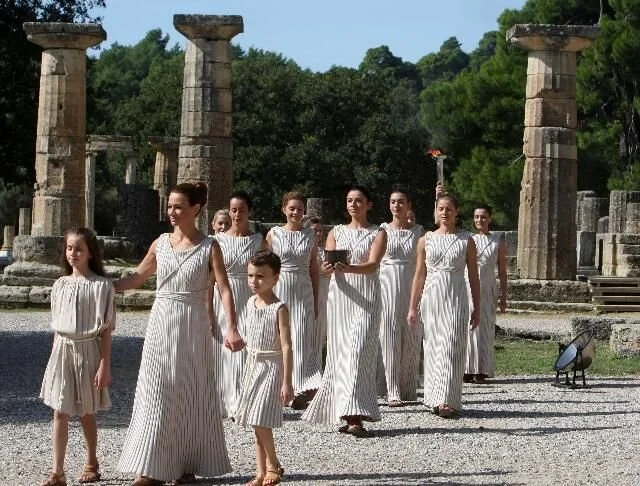The Minoan civilization in Crete, the Greek culture in mainland and the Cycladic culture in the Aegean had one thing in common: genetic similarities during the early Bronze Age about 5,000 years ago.
This is according to a new international scientific study in which Greek and foreign researchers conducted ancient DNA analyzes in the area. This research sheds more light on the origins of the first major Bronze Age cultures in Europe, the role of migration and the emergence of the Indo-European languages.
This is the first study to "read" complete genomes of skeletons found at various archeological sites in the Aegean and the wider Greek area. More specifically, four from the Early Bronze Age and two from the Middle Bronze Age.
Mitochondrial genomes were also analyzed from 11 other early Bronze Age individuals. The analysis of all these genomes allowed the experts to perform demographic and statistical analyzes and to draw conclusions about the history of the ancient populations of the region.
The researchers, led by Professor Christina Papageorgopoulou of the Laboratory of Natural Anthropology of the Department of History and Ethnology of Democritus University of Thrace and Anna-Sappho Malaspina of the Department of Computational Biology of the University of Lausanne concluded that the first cultures that built monumental palaces and urban centers in Europe, are genetically more homogeneous than expected.
According to the scientists, these findings are significant because they suggest that the important innovations - such as the use of metals and intensive trade - that occurred during the transition from the Neolithic to the Bronze Age were not only due to mass migration from the East to the Aegean, but also to the cultural continuity of the local agricultural Neolithic populations of the Aegean.
Based on palaeogenetic data, Aegean populations of the Early Bronze Age appear to have been shaped to a relatively small extent by eastern migrations.
At the same time, the study found that the people of North Aegean until the Middle Bronze Age, 4,000 to 4,600 years ago, had more significant genetic differences than the differences they had in the Early Bronze Age.
In particular, these people had about 50% in common with people from the Ponto-Caspian Steppe, a large geographic area that stretched between the Danube and Ural rivers and north of the Black Sea.
In fact, based on genetic findings, today's Greeks are quite similar genetically to those populations of the North Aegean of 2,000 BC. The study also assumes that waves of migration from the great steppe north of the Aegean shaped modern Greece.
According to the researchers, all of these possible waves of migration preceded the emergence of the earliest form of the Greek language, supporting theories about the emergence of the early Greek language and the development of Indo-European languages in either Anatolia or the steppe of Pontus-Caspian.
The Bronze Age in Eurasia was marked by decisive changes at the social, political, and economic levels, visible in the emergence of the first large urban centers and palaces that laid the foundation for modern economic and political systems.
However, despite the importance of understanding the emergence of these early European civilizations and the spread of Indo-European languages, the genetic origins of the populations behind this crucial transition from the Neolithic to the Bronze Age, and their contribution to the present-day Greek population, controversial questions remain, according to researchers.
However, it is hoped that further studies analyzing integrated genomes between the Mesolithic and the Bronze Age in the regions of Armenia and the Caucasus will shed more light on the origins of migrations to the Aegean and better reconcile paleogenetic data with archeological and geological .
Finally, it should be noted that the new study involved many other Greek researchers from the Ephorate of Antiquities of Kozani and Florina and the Universities of Democritus, Aristotle and the Aegean.









